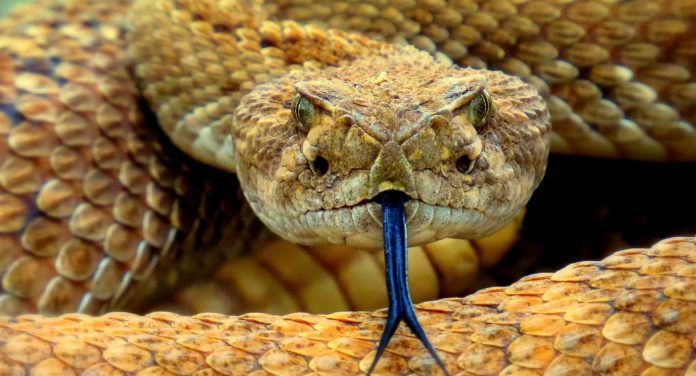Sri Lanka has the highest biodiversity as a country in South Asia even a small country. Sri Lanka inherits ecologically and scientifically important fauna and flora due to the forest system that exists across the three climatic zones. Of these, snakes are one of the most important animal species. While many of these snakes are harmless, but some are venomous and pose a potential threat to humans. In this article, we are going to explore the world of venomous snakes in Sri Lanka, shedding light on their types, habitats, encounters, and the crucial aspects of snakebite treatment.
There are 108 species of snakes belonging to 11 families and 16 species of sea snakes. In classifying snakes, they are classified on their level of venom. Accordingly, there are 4 types of snakes in Sri Lanka. they are acute venom, mild venom, little venom, and non-venom. There are five most venomous snakes and their attack can even be fatal.
Top 5 most Venomous snakes in Sri Lanka
Sri Lanka is home to several venomous snake species and five of them are particularly infamous for their potent venom and potentially lethal bites.
Russell’s Viper
It is correct to say that Russell’s viper is one of the most venomous snakes in Sri Lanka. These snakes are highly active and highly venomous, and they attack very fast.
russell’s viper is often a nocturnal snake and can be seen during the day. They can be described as a species of snake that lives on the ground but will be on small bushes during the rainy season.
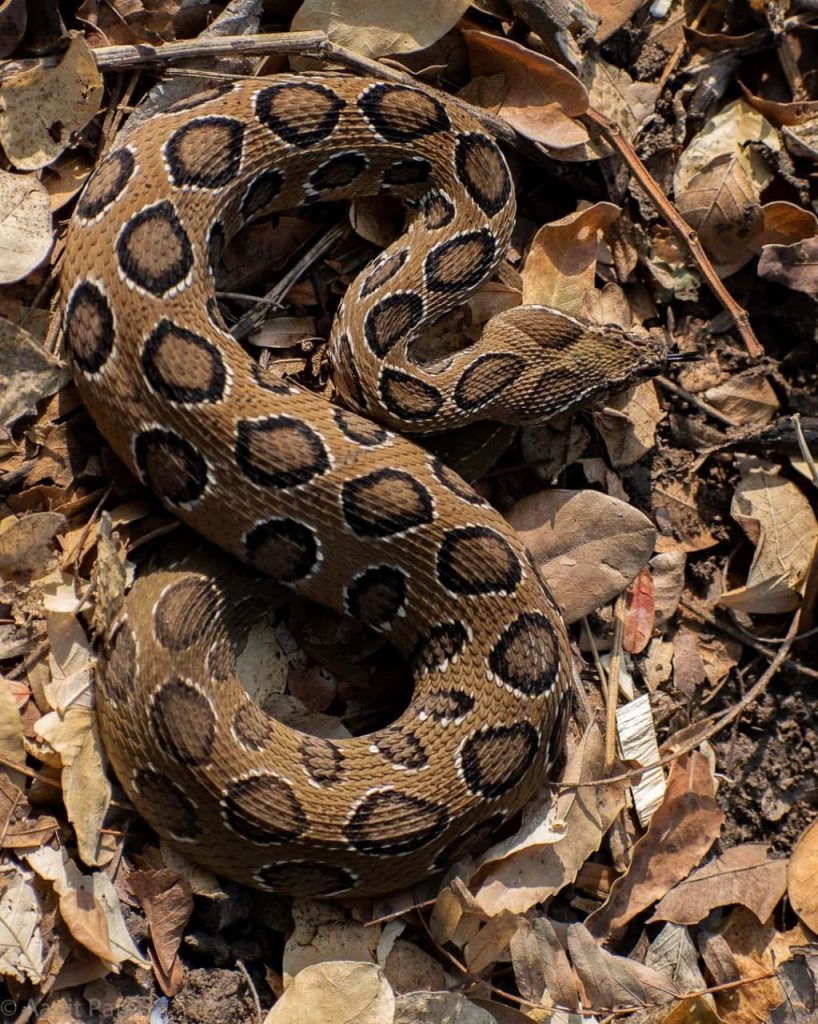
This species is very slow-moving and moves very fast when panicked. and also It crouches quickly and tries to attack, often doing a few bites. Anyway, normally this snake gives birth to 5-15 babies.
They are about 200 mm long at birth and adult animals are about 800-1300 mm long. They mainly eat small animals such as rats, lizards, birds, and frogs. Russell’s viper attacks the prey from ambush however, they can live without diet for up to 5 months. They are yellowish-brown in color and have a V-shaped head. There are also chain-shaped ring-like spots on the body.
Russell’s viper is common in the forests of the arid zone, this species lives near grasslands, groves, and jungles. Rarely found in wet forests but not in the central highlands. These dotted snakes inflict the highest number of bites on farmers in the dry zone.
When attacked, Russell’s viper ingests a number of toxins, which can damage nerves, blood tubes, muscles, kidneys, and other vital organs of the body. This can lead to severe symptoms such as ruptured blood vessels in the mouth and nose, bleeding from urine and feces, weakened eyes, and renal failure. and even death can happen if not treated in time.
Saw scaled viper
The saw-scaled Viper lives near sand dunes and the sandy coastal areas of Sri Lanka. They are active during the evening and during the daytime, Saw-scaled vipers live under rubble and rocks, and at night time they come near tarred roads to get warm. They are very quick to irritate and when frightened, they rub their body scales and make a noise.
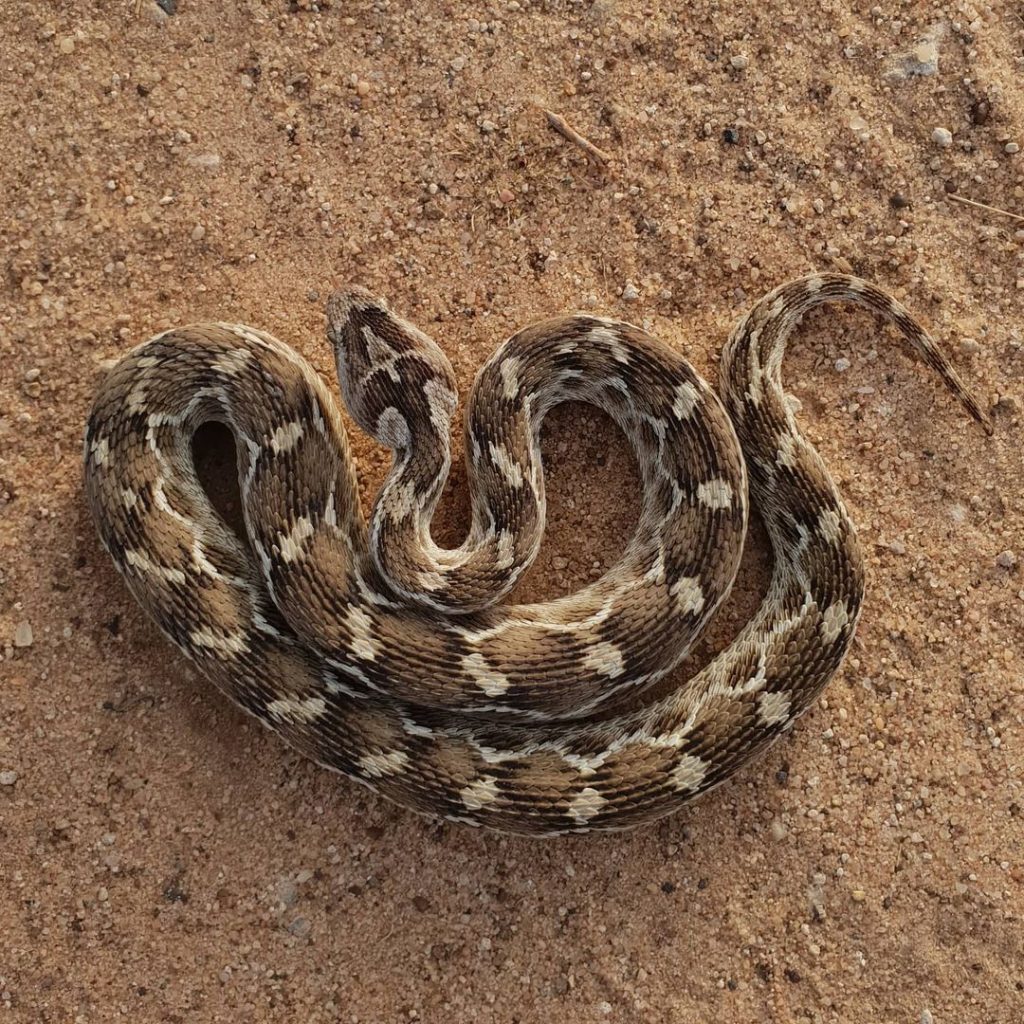
Another characteristic of these vipers is that they move very fast and are quick to bite. They give birth to 3-13 pups at a time. At birth, it is 50-80 millimeters long and the adult animal is 300-500 millimeters long. It also takes small mammals, frogs, and lizards as their food. Saw-scaled vipers also often eat small snake species too. Their body color is gray or light brown and can be seen as a white bird’s foot mark on the head.
It is one of the most venomous snakes in Sri Lanka and releases venom that affects the circulatory system during a bite. This can cause severe headaches, swelling of the bite site, and pain. Although highly toxic, the risk of death is very low, especially in Sri Lankan species
Cobra
The cobra is the easiest to recognize and one of the most venomous snakes in Sri Lanka. This animal’s hood and the mark similar to the letter “v” on it make it very easy for anyone to identify. Cobras live almost everywhere in Sri Lanka. Especially even in Colombo, you can see a lot of snakes.
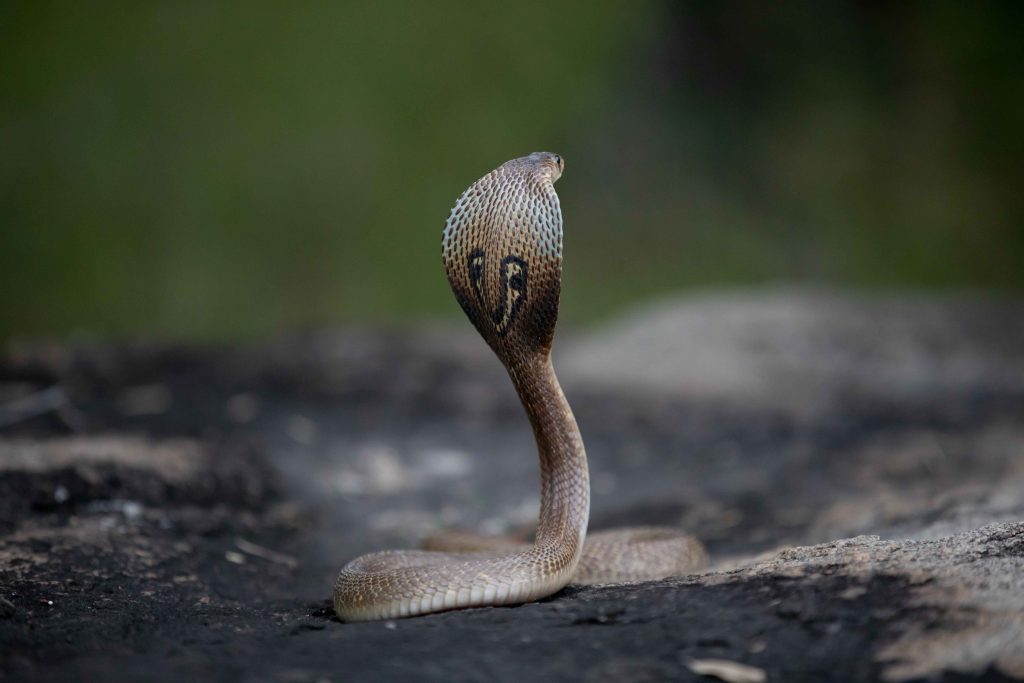
Body color can be changed and the marks on their heads are sometimes absent. They are about 200-300 millimeters long at birth and about 100-1500 millimeters long when they grow up. Normally Cobras take animals such as frogs and rats as food and there have been reported eaten vipers. They are often active during the day and can be seen at night. Most of the time they are on the ground but they also can sometimes climb trees or even swim.
Cobras often try to flee too fast when it feels dangerous, but if they can not do it, they stand and spread their hood and make warnings. Even after such a warning, the cobra is tempted to bite when it feels threatened.
The Cobras are found in all parts of the island except in the highlands and live in rice fields and plantations. The effects of toxicity released during an attack can affect the respiratory and circulatory systems. After the bite, there may be swelling, severe pain, vomiting, loss of consciousness, and difficulty breathing. Left untreated, it can even lead to death.
Sri Lankan krait
They are endemic to Sri Lanka and live mostly in the wet zone. The body is dark brown or black with white rings all over the body. The young are about 200-300 millimeters long, but the adult is about 500-1000 millimeters long. Sri Lankan kraits are nocturnal snakes and are very lazy. During the day it hides among the leaves and debris and when frightened often tries to hide its head and often does not bite.
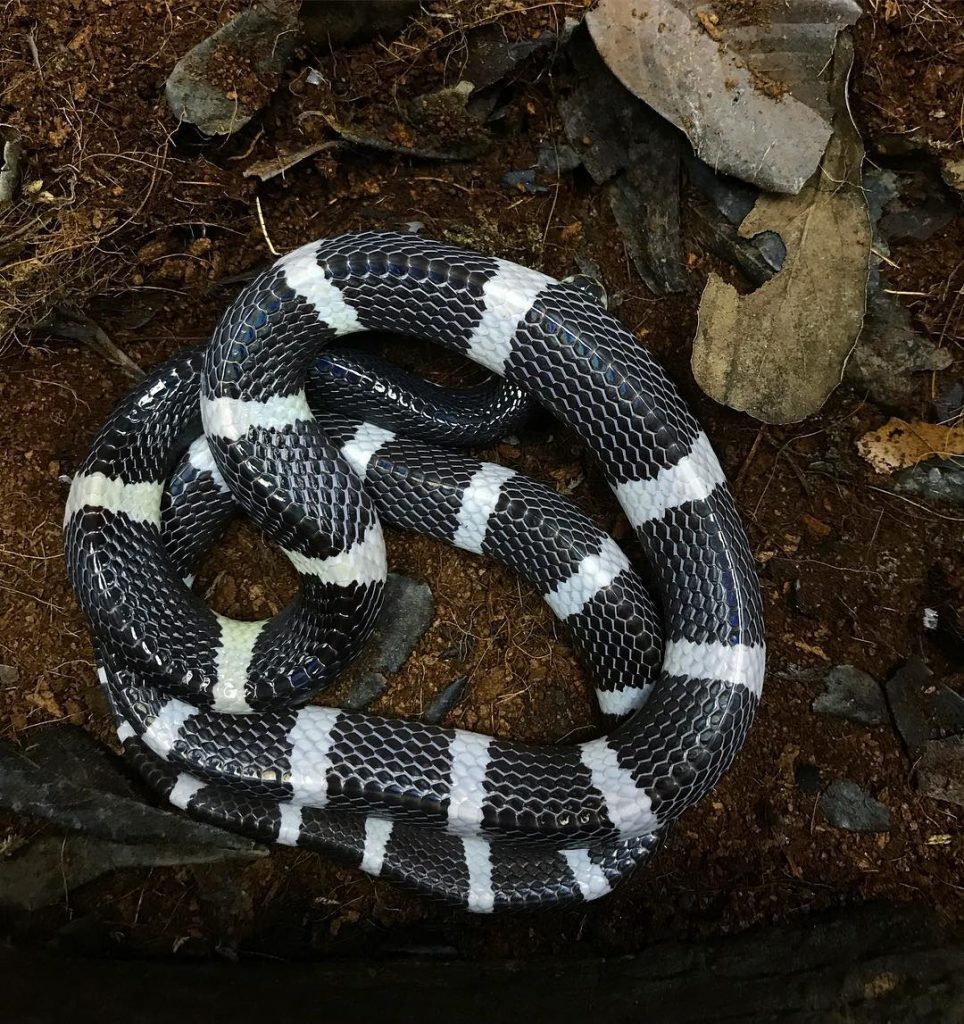
Sri Lankan krait lays 8-10 eggs at a time and females and males protect them. They are one of the most venomous snakes in Sri Lanka and cause poisoning which causes affect the nervous system and heart. Their teeth are so small that it is difficult to locate the place even if they are bitten. There will be not much bleeding, so you will only feel pain similar to the bite of an insect. However, a lack of prompt and correct treatment can even lead to death. Sri Lankan krait feed on non-venomous snakes and eat on animals such as frogs and rats too.
Common krait
Common kraits are very active at night and hide under rocks or leaf litter during the day. These snakes are very fond of water areas. when frightened, they roll like a coil and they hide their head instead of getting angry very quickly. They are about 200-250 millimeters long at birth but about 800-1700 millimeters long when they grow up. They also lay 6-12 eggs at a time and the females protect them until they hatch.
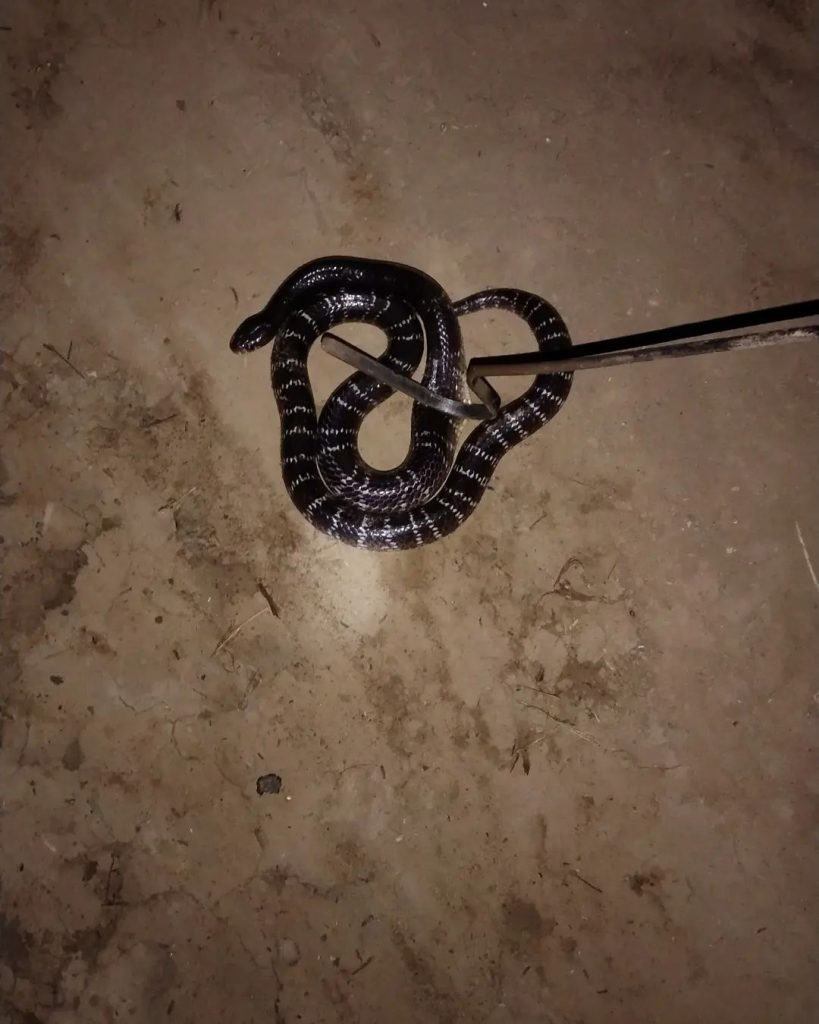
Take small snakes and small animals as food, and live mostly in the dry zone. Common kraits are one of the most venomous snakes in Sri Lanka and often bite at night. After being bitten, they keep biting the spot for a considerable time and their venom severely affects the nervous system. The toxin causes symptoms such as abdominal pain, difficulty in sticking out the tongue and talking, and difficulty breathing, including swelling and pain at the site of the bite.
Distribution and Habitat
Venomous snakes can be found throughout Sri Lanka, from dense forests to urban areas. Understanding their habitats is crucial for preventing encounters.
Human-Snake Encounters
While snakebite incidents are relatively rare, they can be life-threatening if not addressed promptly.
How to avoid snake bites
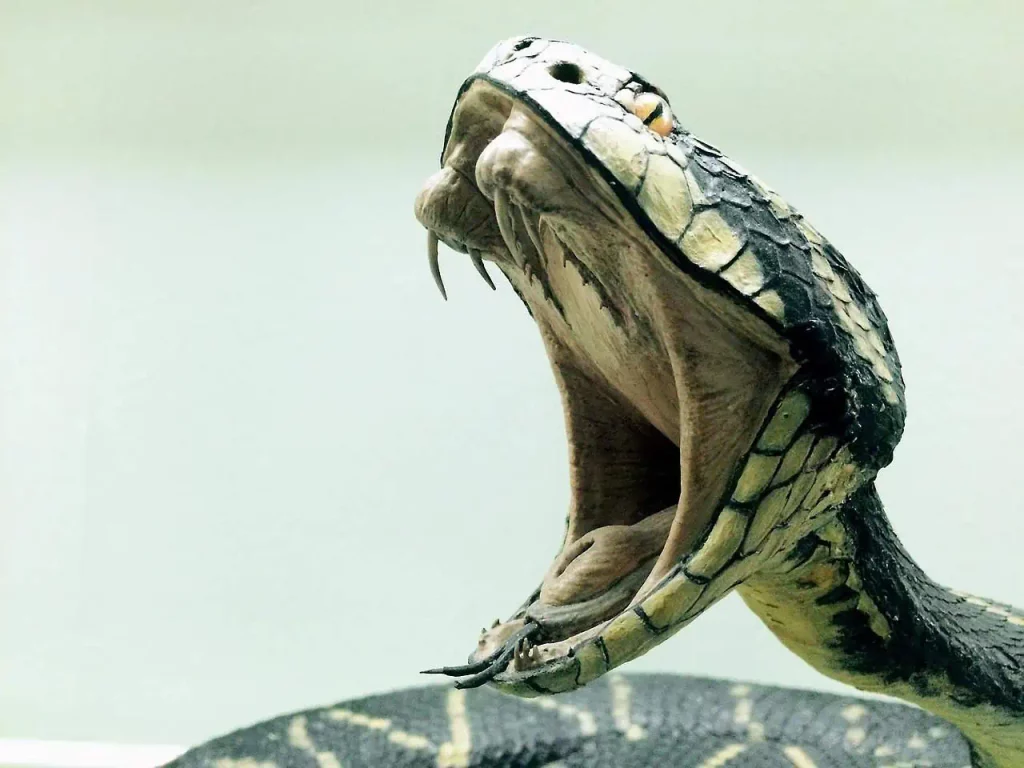
- Step back quickly when you see a surprised snake and if you heard 1st warning of the snake
- barefoot or sandals should not be worn in jungle areas when walking and should be worn with boots instead of sandals when walking in places where you can not see your feet where you step.
- Always try to be on a trail when you hiking or exploring the jungle where you have never been
- Never try to touch the snakes or never close to them
- Careful about the snakes around before picking up stones, poles, or wood
- Limit unnecessary unsafe night walks
Snakebite Treatment
Knowing what to do in case of a snakebite is essential for minimizing the risk.
What to do if you get a venomous snake bite in Sri Lanka
- Try to identify the snake If you can recognize the snake it will be helpful for treatments and if can not, You can take a picture of the snake or catch the snake alive and show it to the doctors
- Do not panic or walk, run, or move the area where the bitten
- Do not suck the venom or wash the bitten area
- Pressure the bitten area
- Find medical helpers, an ambulance, or a doctor immediately, and should get treatment within 45 minutes to save lives
First Aid Tips
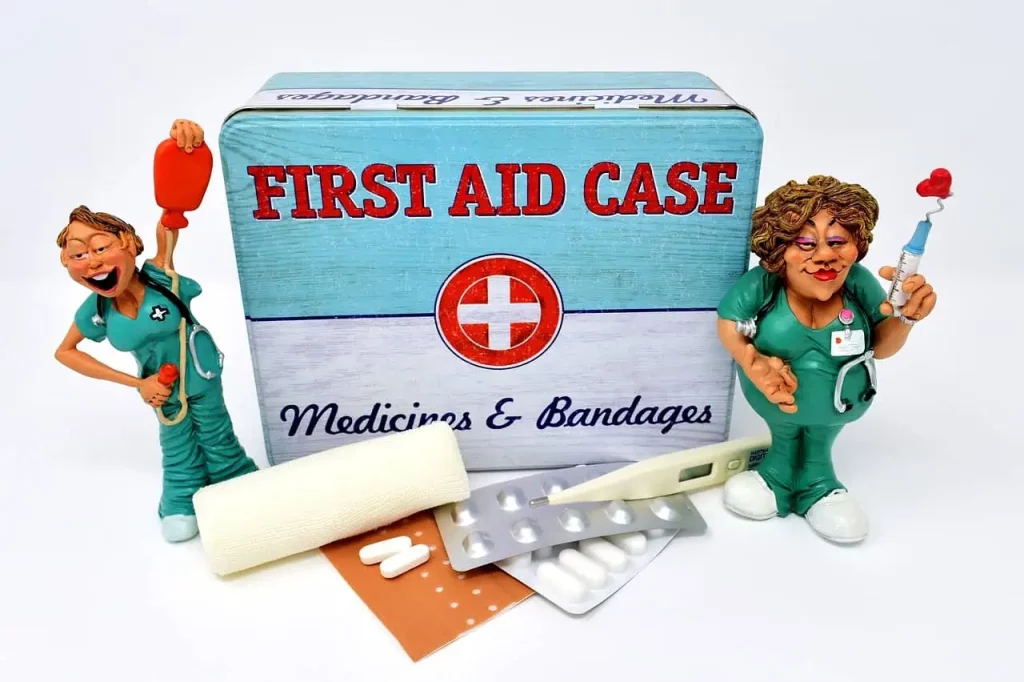
- Immobilize the affected limb: Keep it as still as possible.
- Remove tight clothing: Allow for swelling.
- Apply a bandage: Wrap the bite site lightly to slow venom spread.
Conservation Efforts
Preserving these fascinating but potentially dangerous creatures and their habitats is essential for biodiversity and ecological balance.
Protecting Snake Habitats
Habitat preservation: Maintain natural ecosystems to safeguard snake habitats.
Responsible tourism: Encourage responsible tourism practices to minimize human-snake encounters.
Raising Awareness
Educational programs: Teach communities about the identification of venomous snakes in Sri Lanka and safety measures.
Research and conservation: Support initiatives that study and protect Sri Lanka’s snake population.
Conclusion
Venomous snakes in Sri Lanka are a part of the country’s rich biodiversity. While they can be dangerous, with the right knowledge and precautions, encounters can be minimized, and snakebites can be effectively treated. Protecting these incredible creatures and their habitats is crucial for the balance of nature.
FAQs on Venomous Snakes in Sri Lanka
Are all snakes in Sri Lanka venomous?
No, not all snakes in Sri Lanka are venomous. Many are harmless to humans.
How common are snakebite incidents in Sri Lanka?
Snakebite incidents are relatively rare but can be serious if not treated promptly.
Is antivenom readily available in Sri Lanka?
Yes, Sri Lanka has a well-established system for providing antivenom to snakebite victims.
Can snake venom be used for medicinal purposes?
Some components of snake venom are being researched for potential medicinal applications, but this is still an evolving field of study.
What should I do if I encounter venomous snakes in Sri Lanka?
Stay calm, slowly back away, and do not attempt to handle or provoke the snake.

